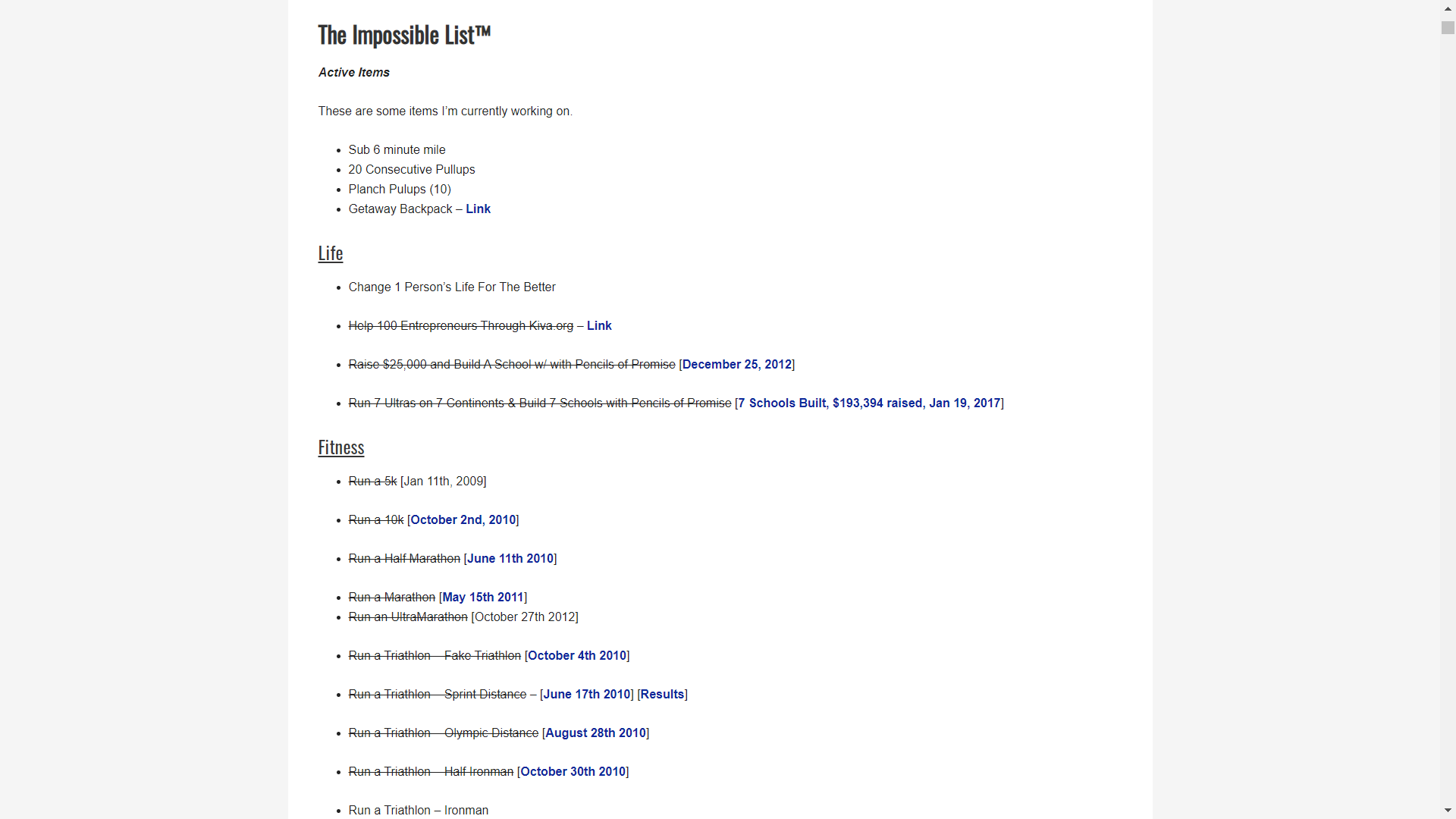
How To Be Productive and Organised
Feeling overwhelmed? Struggling to stay on-top of everything? Things slipping through the cracks? With a little preparation and know-how, anyone can be both productive and organised. Don’t believe me? Follow this guide, and let’s get you in tip-top shape to take on the world.
JOHN NICHOLS
AUGUST 21, 2020
It’s often thought that productive, organised people are simply wired differently than the average person. To a certain extent, this is true – some people, such as creatives, are typically natural self-motivators, with an unwavering passion to both improve and move forwards.
However, this doesn’t mean that if you’re not part of this small percentage of the population, you cannot get things done. Hell, even if you are incredibly self-motivated, there’s always tips, tricks and adjustments you can make to improve your productivity.
This doesn’t have to be a complicated process. The key to a more productive and fulfilling life could be what you’re likely reading this on right now – your phone.
Task Management
We all have tasks that we must fulfil every day. At the most basic level, this would include waking up at a particular time, brushing our teeth and taking a shower, to name a few. Often though, there are key events that we need to remember – doctor’s appointments, work deadlines, drinks with friends and the like.
To begin, we need a system of organising all of our current tasks, both essential and aspirational. Rather than relying on your memory, which is an all-too-easy way to forget things, there needs to be a reliable way that we can store, read and check-off these tasks.
For this, I recommend Todoist. It’s an app that serves one simple purpose – to digitise everything you need to remember.
Todoist is the perfect example of a simple concept that can prove very powerful. At its core, you enter a task, when it needs to be done by, and arrange it into a group (work, bills, hobbies etc.). It’s as easy as that.
The great thing is that it scales with you – you can create a barebones system to track simple tasks, or you can do this…

Virtually everything I need to remember, and certainly every task that is important to me, is logged in Todoist. From hobbies to birthdays, bills, scheduled meetings, and even simple daily tasks such as exercising and reading, nothing escapes my task manager of choice.
Flexibility is a major component of Todoist. Whether you want a super complicated system to track every part of your life, or just something to remind you when to do the laundry, Todoist works equally as well.
What’s more, it’s available on, and syncs across, iOS, Android and PC, meaning that no matter the device you’re on, so long as you have internet access, you’ll never be apart from your task manager and all that it contains.
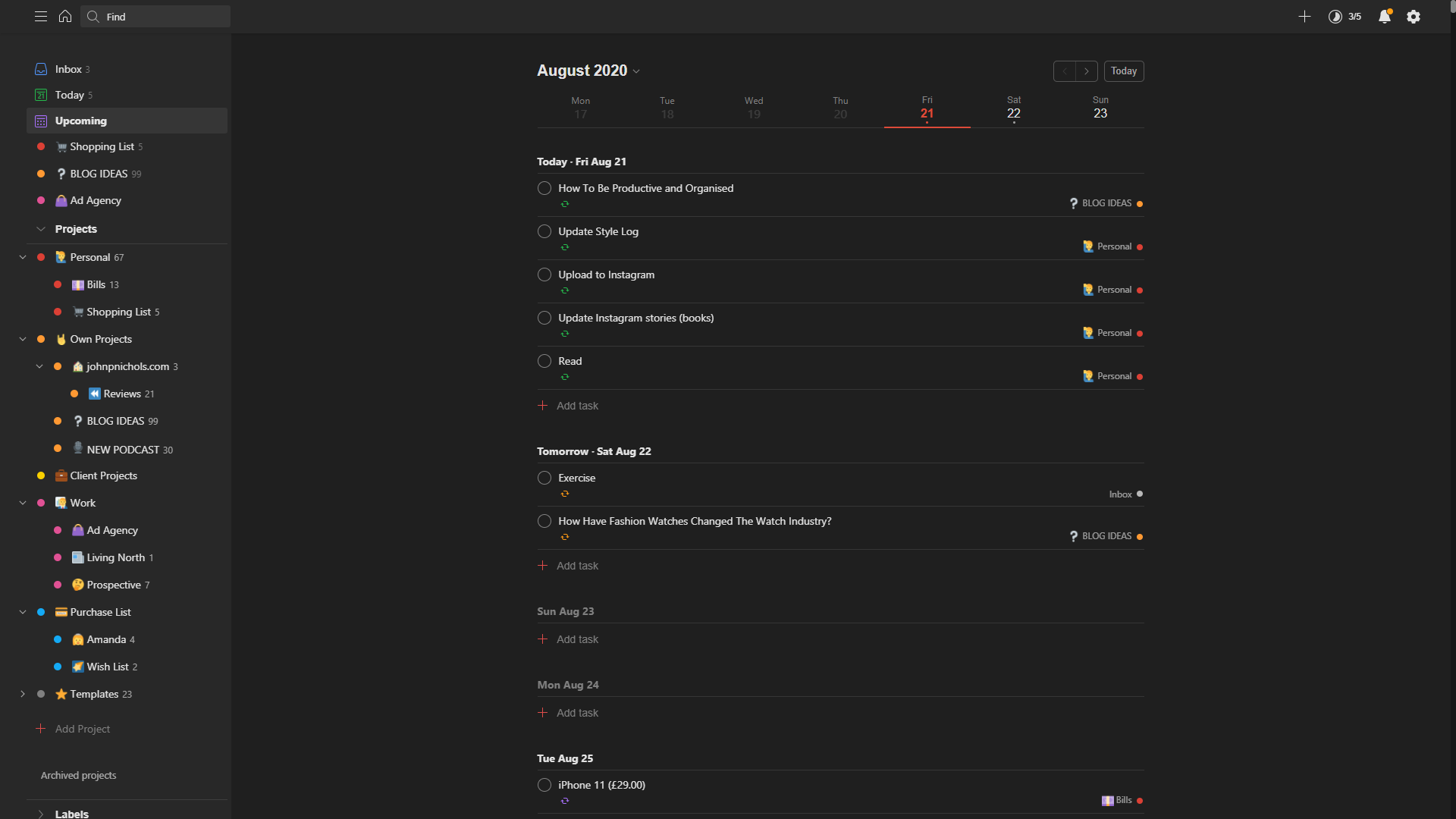
Todoist uses a “freemium” model. The free version contains all of the key utilities that you’ll need, but the paid-for version can, crucially, push notifications when the time set for a task to be completed is approaching. These nudges turn Todoist from a passive task manager to an active task manager, and although it’s not necessary (I get by completely fine with the free version), I can certainly see the benefits of the paid features if you’re an incredibly busy individual.
Downloading a task manager is one thing – using it is another. Todoist has fantastic widget integration on Android – 75% of my homescreen real estate is taken up by the Todoist widget, meaning it’s practically impossible to miss every time I use my phone. You can switch which upcoming tasks are shown via the widget, whether it’s just the tasks for today, the next seven days, or even just the tasks attached to a certain project.
99% of the time, I am on the ‘next 7 days’ view, allowing me to tick off the day’s tasks as I work my way through them, as well as prepare for tasks approaching later in the week. This gets you to think ahead and make impactful, positive decisions to set yourself up for future success.
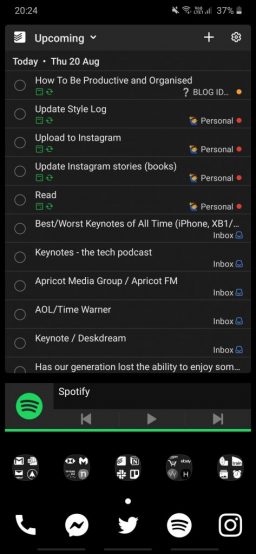
To get started with Todoist, and get used to using it regularly, I suggest adding simple daily recurring tasks. For example, my first task when I get up in the morning is to exercise, whilst my last task before I go to bed is to read. Entering these into Todoist and making a habit of checking them off on completion creates a habit of using Todoist often, as well as kicking you off with time-efficient ways to work on your self-care and self-improvement every day.
Importantly however, Todoist will only be effective for you if you have the self-discipline to only mark a task as completed once you have actually completed it. Don’t check off tasks that you haven’t done – you’re only cheating yourself.
Note-Taking
Now that we’ve logged and arranged the tasks we need to get done, we need to look at the best way to take notes. Ever get a brilliant idea in your head, but forget it before you get a chance to write it down? Let’s eliminate the chance of this ever happening again (or at least as much as we can).
There’s two different reasons why we usually take notes (aside from phone numbers and the like). One, we’re getting down an idea, or two, we’re trying to learn something.
Recording Ideas
For getting spontaneous ideas down, having the Todoist widget on my phone’s homescreen means I’m never more than a few seconds away from getting an idea digitised once it hits my mind.
This is often the most convenient option – if I’m walking to work and have a brainwave, it’ll be a matter of seconds before I’ve unlocked my phone and made a note through the widget.
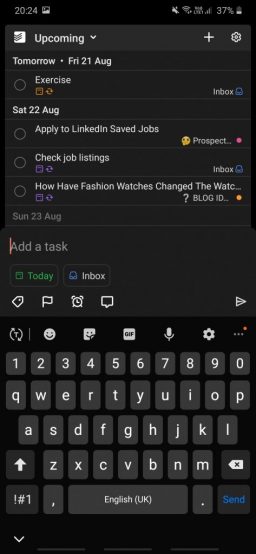
If my phone is away from me or out of battery, I always carry a small leather-bound journal with me wherever I go. These handwritten notes can always be digitised in future if required, and it’s nice to carry a conveniently-sized book of ideas that you can easily flick through – you might write something down that you look back on in future and realise warrants further investigation.

My journal is deliberately small as to not be a pain to carry – if needs be, it can fit inside a coat pocket. For me, using a nice leather-bound journal makes me really consider what I write within (as to not waste the pages), causing me to actively think about both how and what I write rather than passively jotting information down. This leads me to think more creatively and freely, enabling me to generate better ideas.
Learning
For learning, putting pen to paper is the best way for your brain to absorb and retain new information. The journal could work for this too, but digitising long pieces of writing by hand is a mind-numbing, tedious exercise.
Enter Rocketbook. On the surface, this is just a simple notepad – however, in conjuction with the Rocketbook app, you can easily have your written notes converted into a PDF and automatically sent to your Dropbox, GDrive, email, or any other digital location you’d like.
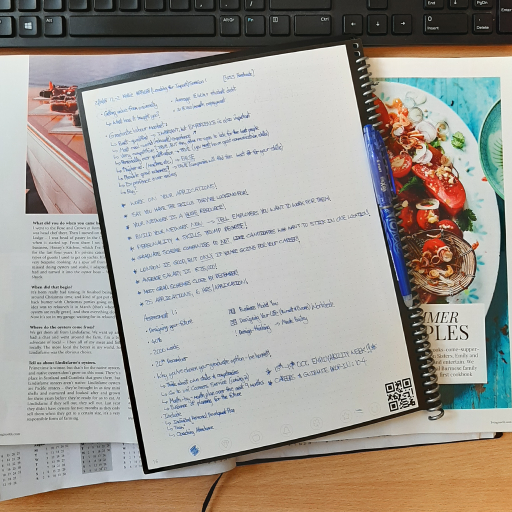
For longer written pieces, this is the best of both worlds between pen & paper and a digital system, allowing you to connect with the page whilst also giving you the convenience of a digital counterpart.
The best thing about a Rocketbook is that it can never run out of pages. Once the notebook is filled, simply ensure you’ve digitised each page, and then run the notebook under a tap. This erases the writings on the plastic pages, giving you a clean slate once again.
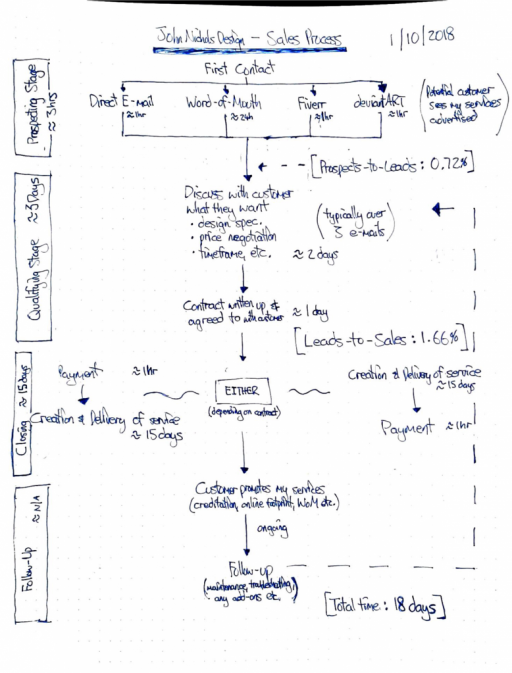
My Rocketbook Everlast was crucial during my university years, allowing me to easily collate all of my lecture notes, seminar minutes and assessment advice. For entrepreneurial purposes, it was brilliant for pictoral writings, such as spider diagrams, moodboards and other idea generation exercise formats, with the ability to upload directly to a GDrive meaning colleagues could easily view all of my notes post-class.
Project Management
We’re now on-top of everything we need to do, and have a brilliant system to get down our ideas and retain new information. But, what about tracking the status of a project?
Whether it’s articles and books you need to research, a list of songs you want to learn on guitar, or all the files, notes and resources you need to study for an exam, a solid project management system pulls everything together in one place, serving as a one-stop shop for all the things you need.
For this, nothing beats Notion. It’s the ultimate project management tool which, like Todoist, has endless possibilities in how it can be used, and the levels of detail that can be included.
Like Todoist, Notion is also cross-platform so you’re never far away from your notes.
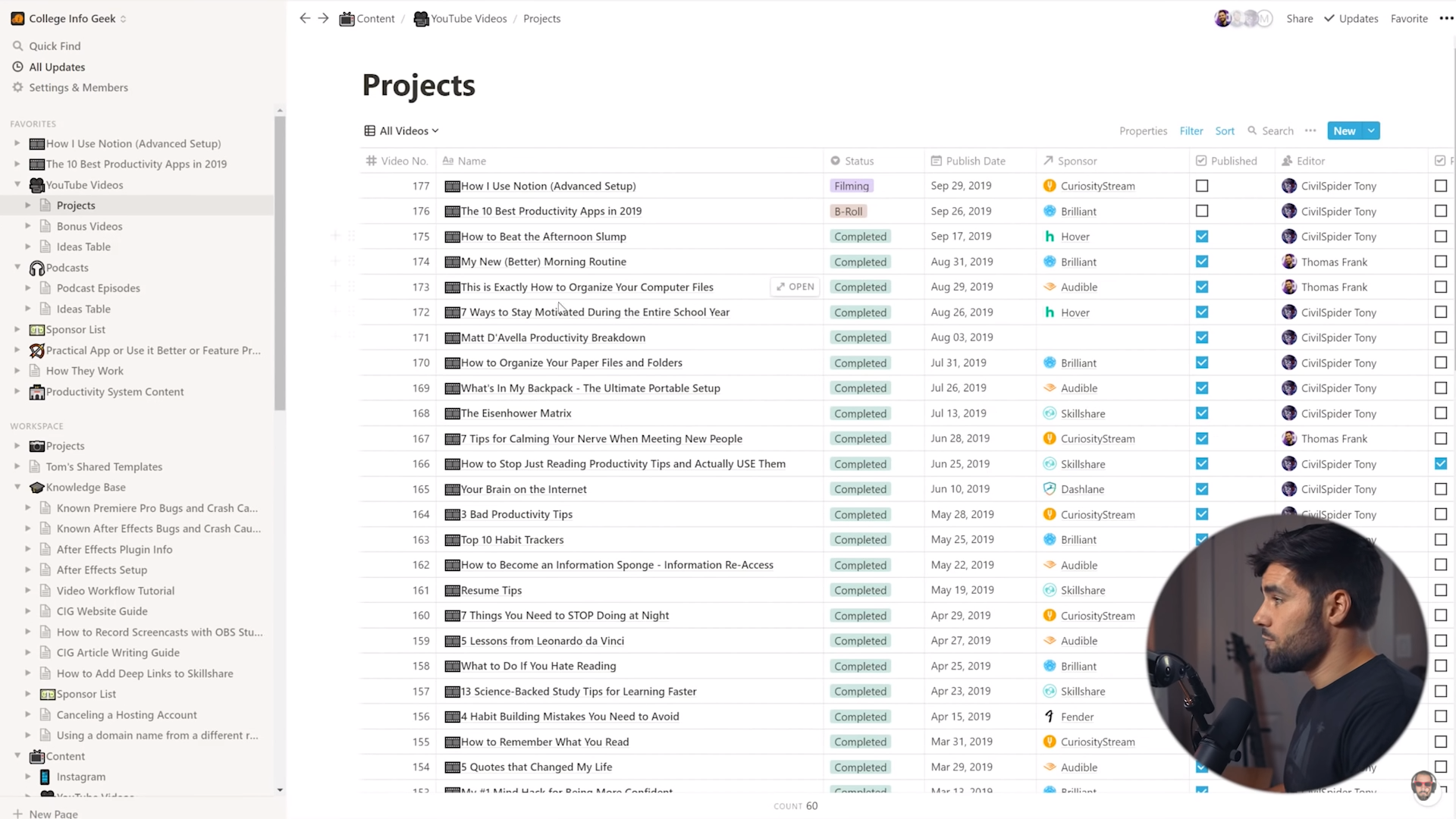
Thomas Frank has put together perhaps the best video resource on Notion online, detailing how he runs his entire YouTube channel, podcast, website and other projects right from the app. Notion is a complicated and daunting app when you first open it, but Tom does a better job of explaining both how Notion works and all of its nuances better than I ever could – you can view his video here.
Target-Setting
We have our tasks managed, our note-taking is on-point, and our projects are under control. Now, we can look at becoming more focused and purposeful. To make progress quickly and efficiently, SMART targets are key.
No matter if it’s a work-based goal, hobby progress or whatever else is important to you, SMART targets are an effective way of turning vague ideas of improvement into actionable steps to help reach your long-term priorities.
SMART is an acronym, standing for:
- Specific – Narrow the goal down to a particular aspect you want to work on.
- Measurable – Make sure there are metrics you can easily track to show your progress.
- Achievable – The goal has to be reasonable; Rome wasn’t built in a day!
- Relevant – Does this goal help you achieve your long-term objectives?
- Time-based – Set an end-date for this goal to be completed.
Let’s say I am a beginner cook. A good SMART target would be: Be able to consistently cook pasta al dente by Friday next week.
This hits all five aspects; it specifies cooking pasta (Italian cuisine, rather than cooking in general), can be easily measured by my ability to cook pasta correctly, is a relatively simple target for a new cook, is a great beginner-step for moving on to more complicated cooking skills, and has a hard end-date to be completed by.
By combining these five traits, SMART targets, when set on a regular basis, ensure you’re consistently making progress towards your long-term goals. Time is the most valuable asset for all of us, and over time, hitting SMART targets regularly can result in more efficient progress than otherwise possible, freeing up time for us to pursue other avenues, or make improvements in other areas.
Accountability
We can manage our tasks, take excellent notes, stay on-top of our projects, and set effective targets. Last but not least, we need a way to hold ourselves accountable, so that we stick to these plans of making constant forward progress.
Having a public space where you lay out your goals and provide regular updates as to what has been completed and when is a great way to self-impose accountability, boosting your likelihood of being productive by putting productivity front and centre in your mind. This is what my Impossible List does for me.
Even if you don’t have an accountability partner or someone who is actively checking the progress you are making on this list, recording my progress and reflecting on it myself, alongside the simple idea that someone could be checking my list, helps me to make regular contributions towards it. It’s a public declaration of what I want to accomplish, and therefore a measure of how I determine my own success over time.
I have an Impossible List section on this website, which goes into further detail on what one is, how they can be useful, and the current status of my list. You can find this here.
FInal Thoughts
I hope these tips have proved as useful to you as they did to me. It is easier now more than ever to get organised, boost your productivity, and make solid, regular steps towards your goals, and mixing practical advice with fantastic technology will steer you towards the path of future success.
I’ve only focused on my productivity since the start of 2020, and although I have learned a lot so far, I know there’s much, much more to learn. There’s no such thing as a “best way” to be productive by rule, as it’s such an individualistic process – all we can do is optimise our productivity to the best of our ability by learning and applying effective techniques as and when we come across them.
These tips have helped me so much that I’m genuinely surprised at how I managed to cope with all my responsibilities previously. For me, these are a starting point rather than an end as productivity is a very deep rabbit hole to go into, and one that I will certainly be exploring further – I will of course share with you further discoveries I make on my productivity journey in future!
Published August 21, 2020.
